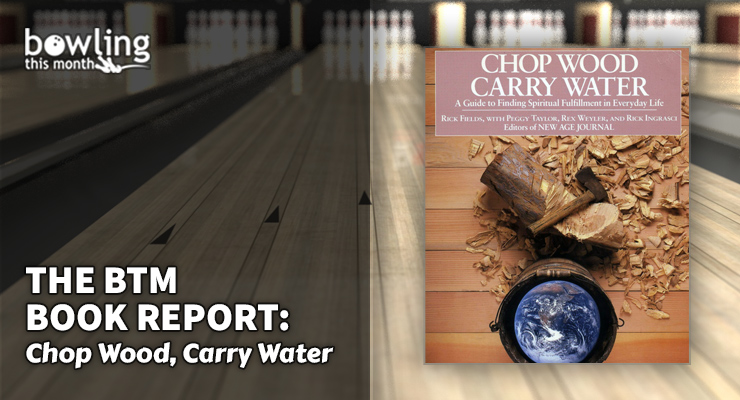Rick Fields’ Chop Wood, Carry Water is a compilation of articles, teachings, and thoughts to help people on a spiritual journey. Published in 1984, some of the references are dated, but much of the content consists of “ageless wisdom” from different religions, philosophers, and thinkers. It imparts advice that can be applied in everyday life and on the lanes, even for bowlers who consider themselves completely practical.
First, we get to look at “spirituality” as a synonym for being connected, or in the present. Being “present” is often used as a way to describe being in the moment, and any modern mental training includes this as a prerequisite to peak performance. In the introduction of this book, where readers are led through the process of discovering spirituality, we are encouraged to “learn by doing.” In the explanation, the writers discuss the concept of learning like a baby—through trial and error. Most importantly, this process involves failure without blame or judgment and simply continuing to try to make adjustments until success is achieved. As adults, we often forget this most natural learning process.
The chapter on work also discusses the potential for spirituality in difficult and mundane tasks. To the authors, work can be an enriching and even meditative experience, depending on your perspective. This is actually the inspiration for the title of the book, which comes from a Zen poem:
Magical power, marvelous action! Chopping wood, carrying water…
The idea is that by being fully connected to the task, regardless of what it is, you can appreciate it for the value of the effort instead of as a means to an end. This is another reiteration of the importance of being in the moment.
Later, in the chapter on play, the authors discuss the western custom of “play” and “competition” becoming synonymous. These become a path to personal transformation. Competition is neither good nor bad, but it is our attitude which can make it productive or destructive. The authors borrow from The Inner Game of Tennis to discuss the value of being non-judgmental in learning and performance and quote Timothy Gallwey, who says the primary value of competition is in “the opportunity to overcome obstacles.”
Finally, in the chapter on perils of the path, we learn about the value of finding the right teacher. It highlights both the importance of using your best judgment, as well as trying out different teachers to see which is best for you. The caution of this kind of “window shopping” is that—eventually—you need to get down to work. It’s not enough to simply go find ...
This article is only available to Bowling This Month subscribers. Click below to get instant access to this article and all of our other premium instructional content.
Subscribe to Bowling This Month
Already a Bowling This Month subscriber? Click here to log in.
